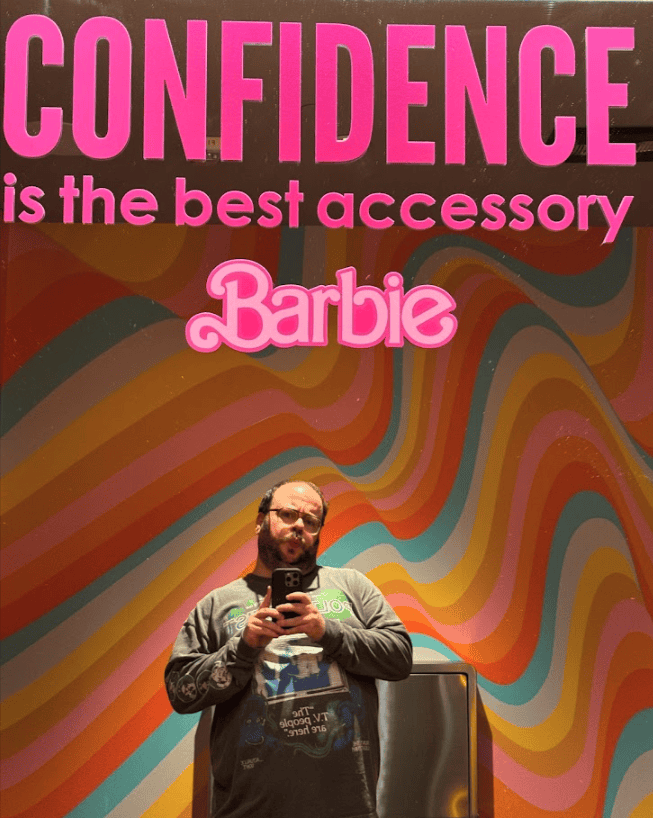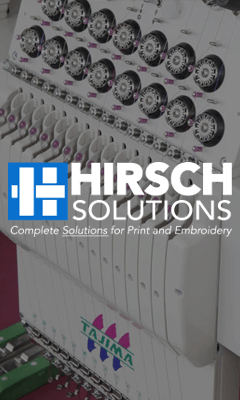Our buddy Zach Corn is a wealth of information, in this case he shares some solid thoughts on customer service. Read on!
Why Customer Service in this Industry is Specific.
So much customer service advice comes riding on the coattails of the old adage “A
Customer is Always Right”. And there is no quicker way to get into the sticky thicket of client
relations than to let them completely guide the experience. For one thing, the original saying is
“The customer is always right, in matters of taste”. I think you’d agree that most of us DO abide
by that rule. If a customer wants to ignore your advice and print something smaller, larger, or in
a location that looks kinda dumb….no problem! If a customer thinks they should get the order
for free because they sent in art that was wrong and approved the proof anyways…Maybe that
customer is more of a liability than an asset…

Another key ingredient that isn’t exactly specific to our industry, but helps you
understand some key concepts, is that a lot of clients are extremely uneducated about the
process of customization and purchasing and that isn’t their fault. Their main job probably has
nothing to do with this industry. That lack of education, mixed with the fact that most customer
service reps start in this industry from scratch, means that we have an information chasm. Even
as reps become more knowledgeable it is easy for them to become jaded in the drudgery of
education. Constantly explaining the same thing over and over again, figuring that since they
themselves have done this a million times, that each client should be an expert as well. If
nothing else, this is the thing that you and your customer service team will need reminded of
time and time again.
Disclaimer: The customer service that we do at Barrel Maker and LivePrinting.com
is for customization as a service. So if you are doing retail or are selling widgets, some of
what I’m saying may not resonate with you.
What Makes a Good Customer Service Person and How to Interview Them
Recruiting, interviewing, and staffing all seem easy enough right? Put an ad out, meet
someone who is nice, throw them in a chair and teach them how to use your price sheet. Maybe
set them up with a few canned emails or PDFs and call it a day
What was that? They are anxious about making phone calls? They are shy and aren’t
the type to advocate for their client? Maybe they huff and puff if a client asks too many
questions….It’s always something. They last a few months, maybe a year, and then you rinse
and repeat. Or if you find someone who is good, you load them up with all of your high volume
accounts until they grow out of the role and move on. No account is easier to poach than an
account that is already used to changing reps every six months, and you WILL have a constant
flow of reps if you don’t take care of the ones you have. Every shop is different, and your size
and profitability will help determine what you can do, but benefits and fair compensation is going
to do what 100 pizza parties will not. Company culture helps too, but company culture is a lot
easier to nurture when your employees can afford the gas to get there.
Identifying someone who will be good for the role of a CSR is an educated guess, and in
the end, you won’t know if you’ve found a keeper until you start training them and seeing who
they really are under some pressure. Someone who can communicate, problem solve, and
distill information is what you are looking for here. You want them to be personable right off the
bat, since every new client that you bring on is essentially another interview for them. If they are
choking on their tongue, or very milquetoast, they are going to be an order taker at best….but
far from someone who will deliver customer service.

I ask three questions in every single interview:
1. Have you ever worked in service or hospitality?
2. What was the last book that you have read?
3. At your last job, if I asked everyone there what your WORST quality is, what would they
say? (Try to ask about a specific job from their resume that they were at for a year or
more and that they worked collaboratively with other people)
Let’s break these down:
Have you ever worked in service or hospitality?
Someone that has successfully worked as a waiter for example, has already been the go
between between a fussy customer and a kitchen staff that is overwhelmed. They are likely
already 80% trained for this position and they are used to being blamed for issues that are
entirely out of their control. The kitchen usually blames them for changes to a ticket, and the
patron usually blames them for slow food or food that has come out different than they
expected. They’ve dealt with rushes and slow periods, and they know how to upsell. Beware of
people who only did it for a very short amount of time before switching industries, or at least ask
how they liked and what their most/least favorite parts were.
What was the last book that you have read?
The book itself usually isn’t the key here. The real question is if they can make conversation. If
they can’t remember, how do they handle it? Can they adapt and give you an answer that works
for the interview or do they immediately blurt out a book that’s a huge red flag? I usually ask
follow ups about the book or if they can’t think of anything I’ll expand the question. What show
was the last show that they binged or what movie perhaps. The goal of these questions is to get
them talking and see how they’d fit into your team culturally. A few red flags in the past have
been certain self help books, or if someone says “I don’t read, I just look at my phone”. The
best answer I’ve ever gotten was “Okay, I’m going to give you the bullshit answer I am supposed
to say in an interview and then the real answer which will probably botch the interview….”
(HIRED!) You can get a ton out of this question.
At your last job, if I asked everyone there what your WORST quality is, what would they
say?
You might read this and think that you should ask “What is your worst quality?”, but that is not
going to get you the same results. People will answer that with “I work too hard”, or “I’m always
on time too much” or some other bullshit that they think that you are looking for. Asking the
question about a third person’s perspective takes them out of the equation. They end up talking
about their last job and giving you honest answers. I can’t tell you how many times people have
answered this with BRUTALLY honest insights like, “They would say that I hide in the bathroom
and play on my phone too much”, or “They’d probably tell you that I’m bad at showing up on
time.” Often, their look of surprise is palpable. And if they don’t know how to be tactful in
relaying their distaste for their former employer, they might not utilize that same tact when they
chat with a client about you either.
Usually if someone isn’t a good candidate you can figure that out really quickly.
Sometimes within minutes. A few other things that I try to stick to:
1. I cancel the interview if they are 15 minutes late and don’t give me a heads up.
2. I should want to spend time with the person, because I will be.
3. I am trying to find someone for a longtime, so if they are in school or looking for a
career outside of this, it may not be worth it to train them.
4. What would their commute be….In Chicago, this could be a limiting factor for
longevity.
How to Train a Killer Team
You’re busy, and if this is your first rep, that’s why you hired someone to work with clients
so you can focus on building the business. Or maybe you prefer doing the production and you
want someone else to work with clients so that you can keep cranking away. If you’ve found a
gem, and you have no other processes in place, they may come up with something and build an
incredible role for themselves. Maybe they’ll even develop themselves into a future manager if
you are lucky. The key here is to invest in them and be available. It is a ‘Measure Twice, Cut
Once’ situation. This is the time that a lot of companies will bring someone on and then become
hostile when they need training. My first screen printing job wouldn’t let me have water unless I
brought my own cup….and on my second day, they threw out the cup that I brought! Make sure
that you spend the time to build trust and make it easy for them to communicate and ask
questions.
How can you make the time for training when you hired them because you already didn’t
have time?! The key here is bite sized pieces, and utilizing them in production. Training them on
how things are being done “in the kitchen”, gives them a ton of tools for chatting with clients and
answering their questions later. Nothing is more frustrating than having a rep for six months and
then hearing them call ink paint. Or hearing them tell a client that you don’t offer something that
you definitely do! Having them help in production also helps you get product out the door and it
adds variety to their day so that they aren’t overwhelmed. If you have a production staff besides
yourself, this also helps them build solidarity and compassion. If your press operators see that
the new rep is willing to lend a hand, they are less likely to build resentment on days that they
see them sitting at a desk. When working in a restaurant in Pittsburgh, there was a waitress that
always came into the kitchen to make her own staff meal when we were slow. I think she did this
because she was a ‘people pleaser’, but it let the kitchen know that she knew how things
worked. She knew how long things took, how slippery the floor was, and hot it got near the fryer.
She knew how easy it was to get into the weeds because she saw what we saw. Her customer’s
food was always hot and made quickly because of this, and because of that she made the most
tips!
Now you have someone who knows a little bit about production and has formed some
bonds with you and/or production. At this point, they might now know everything, but they’ll
know HOW to find answers. Now we work on getting them in front of clients. The phone side of
it is mostly easy….Pick up calls with whatever script your company uses, smile and be friendly,
and never say “I don’t know”, say “I’ll check on that for you.” Emailing and email management is
the part of the training that gets a little deeper, and you want to make sure you spend some time
on this, because although you can hear their end of a phone call, you won’t passively see their
email responses. Make sure they have a good signature with multiple ways to get in contact
with them, as well as a way to go over their head at first. Make sure they know to say “Hello”
and “Thanks!” in every email. Also putting some effort into relating to the client or mentioning
their art or their business goes a long way.
Here are some examples of good and bad emails:
Bad:
Yes, we can help you with that. What shirt do you want?
Good:
Hi Rick! That design is awesome, do you want to get that printed on something higher
end like a Comfort Colors Heavyweight Tee or are these going to be more of a
giveaway? Let me know how many you are looking at doing, but in the meantime, HERE
is a quote for 100 of them on the Comfort Colors. Let me know if you need anything else
or how we can get that going. Thanks!
Bad:
Rick, this is not useable art. Thanks.
Good:
Thanks for sending that over! Do you by chance have this in any other formats?
Sometimes a file that ends with .PDF or .EPS works better for us. Send on over anything
you have and we’ll see if we can make it work. Hope your day is going well!
Your reps are allowed to BE ANNOYED! They just aren’t allowed to show that irritation to the
client. Acting stoked to get each email and actively WANTING the order is the name of the
game. I did consulting for a shop whose email sign-off was “Thanks.”…..With a period. We
ended up realizing that this was just a part of their signature and had been set up a long time
ago, but to a client, that looks like perpetual annoyance. Write “Thanks!”. Add variety. Your
clients’ orders are putting food on your reps’ tables. We need to at least act happy about that. So,
how do we audit and train this?
Sample Emails and Puzzles!
With each new rep, once they are trained on our price list, and taught some of the ins
and outs of our client base, we need to give them some experience without messing up an
actual paying customer. With these “puzzles” they should start easy, and then complicate. They
are meant to stump and even be done wrong, so that the explanation of the correction is the
lesson. Here are the five that I use, with their explanation or correction in bold, but tailor them to
your company and client base:
1. 49 pieces of a basic black cheap shirt. White print on the front, white print on the back
The quantity should be one piece under a price break. When reviewing their response,
this is a moment to teach them that they have some flexibility, that they can suggestively
upsell or quote at the next price break if they are close. It also teaches them how you
charge for underbases and second locations. Fairly straight forward, but packed with
lessons. Also a good lesson in what you’d suggest for a cheap tee.
2. A triblend tee. 2 color print. With Tags. 24 of them.
If you don’t offer tags, swap that out with a service that you have a minimum on. Maybe
you have a 100 piece minimum for process printing? You could make this a process print
asking for less than the minimum. This is to see how they respond to a customer who is
asking for something outside of the scope of your price sheet. Do they say no, or do they
suggest how it CAN be done. Show them how to upsell, and how to always say yes.
3. 144 hoodies. 2 colors on the front 7 colors on the back. Zip ups and pullovers. The
pull overs will get a full front. The zip ups will get the same logo but as a left chest.
How does your shop handle more complicated quotes like this? Would this be on one
order, or two? Will they still quote assuming a 50/50 split of zip ups to pullovers or will
they kick the can down the road and wait for specifics before they quote. Teaching them
that quoting on an assumption is better than giving a competitor the opportunity to be
the first to quote. It is okay to make assumptions as long as you tell the client you are
making that assumption, and letting them correct. I use hoodies for this because we have
an upcharge for fleece, and I want to see if they catch it. If they don’t, it’s a great teaching
moment.
4. 36 Gildan 5000s, 36 3600s, 36 3413s. White tags on all. Hang tagging. And a 1 color
print. Customer supplied garments.
This is to see if they remember an underbase. Since the tags are white, we can assume
the shirt is a color that would warrant an underbase, and that the client called out one
color, not knowing about bases. Also, we charge quantity pricing for tags based on the
tag being the same….aside from the size. So this helps teach them how to charge for
inside tagging and for finishing like hang tagging. It also has a built in lesson about
customer supplied garments, and TYPES of customers that you work with.
5. Now enter the first one you quoted (49 pieces) into Printavo (or whatever order entry
system you use), and use me as the client (I’ll be in the drop down list of clients) You
can use our shop’s address as the shipping address.
This gets them playing with your software, and allows you to check their first basic
entered order. Also, once you check these, and the entered order, it lets you have them
edit some orders since they more than likely quoted 1 piece less than a price break.
Here are some considerations for this type of test!
Having them respond to each one of these in a separate email allows you to roleplay the
client, and coach them as a rep at the same time. Once you get through these, you can send
them a few customer inquiries and have them respond to you before sending to the client. This
is a good practice to do for their first few weeks. Once you have helped establish their ‘voice’,
and you are confident they will ask you questions for things that they are unsure about, you can
start having them work directly with clients without you. I would pick out some random emails to
check every day, and then once a week for the first month or two. If you have more senior reps,
this is a great job for them as well. Assure the new rep that they ARE going to make mistakes,
and always be calm and patient when they ask you a question. If you act frustrated or hostile in
the face of curiosity…they are going to become avoidant, those mistakes are going to be more
frequent, and more costly.
Load testing
Now for the fun part. Panic! This is where we see what your baby rep is like under
pressure. Maybe they can’t hang with more than ten emails in their inbox? Maybe they shut
down? Or maybe, with the right support and encouragement they thrive! If you have a few reps,
I have them forward any straightforward orders as well as a few samples like we tested above.
Check in on them, and send them some more tasks to try to get their inbox between 15-20
emails. Make sure they know what is going on, and be available. Aim to keep this up for a few
hours, and then go through some of the emails that they sent. This is the time that your new rep
will learn your shop’s voice, and come up with one on their own. Beware though, if you aren’t
available, and you don’t check in and follow up….this is where bad habits form, and this is
where bad habits are taught.

Growing up in the Punk Scene in Pittsburgh, the DIY ethos was permanently lacquered onto
Zach’s brain. Taking graphics classes to print bootleg punk tees had him cutting designs by
hand out of green Ulano “Sta-sharp” and Ruby-Red and shooting images on a horizontal
process camera in a dirty basement. He was initiated in the out-dated ways before getting
baptized into the big leagues at Ibis Tek Apparel/ITA Printing in Butler, Pennsylvania, learning
RIP software, process seps, pin registration, and specialty inks.
When the economy crashed in 2008 he moved to Chicago with only what he could fit into a two
door Civic. He got his first sales job selling DTGs, lasers, embroidery machines, and supplies at
a time when money was scarce, teaching him how far a phone call and a handshake could get
you.
Eventually becoming the VP of Sharprint, and finally finding a home as VP and Jack of all
Trades at Barrel Maker Printing and LivePrinting.com he’s worked with Apple, Threadless,
Tee-Spring, CustomInk, Reebok, Nike, Adidas, GQ, and countless others.
And he still runs into something new every single day.
Reach out to Zach if you ever want to chat about Pittsburgh, Chicago, punk rock, screen printing,
decoration, or service. zachcorn@gmail.com


Hello Zach Great job !! very complete looking foward fore more ,,,